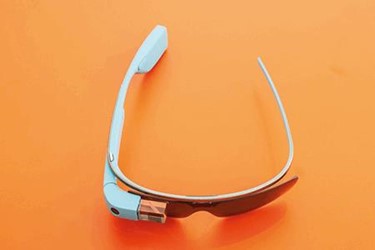AWE Show Report: Inching Closer To Reality
By Spencer Gisser, VDC Research

The 2019 Augmented Wearables Expo (AWE) took place in sunny Santa Clara, Calif. This year’s AWE 2019 featured a large “play area” dedicated to entertainment-oriented use cases. With more than 7,000 attendees, 250 exhibitors, and 300 speakers, AWE pulled in a large crowd over its three-day run. AWE is primarily oriented toward smart glasses hardware and software, though other forms of novel interfaces are included. Smart suits and smart fabrics, including innovative applications of haptic technology, have their place in the conference, expanding the scope of “solutions” on display.
The market for smart glasses and augmented reality/virtual reality (AR/VR) is in a state of flux, typical for an early-stage market. The market is going through its natural vetting process, shedding itself of poorly conceived or ill-timed ventures (see ODG, Meta, etc.) and starting to find common ground in viable target markets and applications. To the realization of many, the enterprise and field mobile workers, specifically, represent the launching point. This alone is not a particularly new development – VDC has been touting the enterprise opportunity for several years now. What has changed is that the market has been freed from the shackles of “pilot purgatory” and organizations are now placing meaningful bets on these solutions.
The pace of change in this market remains rapid, and much of the early success has been centered on more simple applications with the adoption of true mixed/augmented reality only beginning to surface. Moreover, many technology providers in this area are still finding their place in the enterprise market and what it means to serve enterprise customers, including development of the necessary support and partner ecosystems. These companies are actively experimenting with everything from the design of their solutions to how they tailor their messaging to different use cases. Some companies have even begun to explore flexible pricing options, including Device-as-a-Service implementations.
Compared to last year, the improvement to technology is palpable. Last year, for example, MAXST had developed a solution that could scan objects and form a detailed 3D model of them. This year, the company had not only improved that capability but had extended it to scanning and modeling large areas such as rooms and hallways. Varjo demonstrated how Volvo uses their system for building vehicle prototypes. Instead of building physical models or stepping inside a prototype, Volvo’s UX designers can don a headset and understand a car’s sight lines and how users will experience their vehicle through a high-quality headset display. While the manipulation of AR objects in one’s field of view remains clunky in many systems, noticeable improvements in the integration of voice capabilities have significantly improved the ease of use of these products.
However, the fall of high-profile smart glasses and AR/VR providers ODG and Meta has certainly affected the dialogue. One the one hand, there is a natural level setting of expectations that any emerging market goes through. However, this similarly elevates the risk profile of investing in technologies from startups that may not be around for the long run. This will likely prolong some of the purchase decision timeframes, especially with some of the smaller venture-backed organizations.
Yet, the market has seen notable successes this year, breaking through significant deal size thresholds. Both Microsoft and Realwear have seen large unit purchases at or above the 10,000-unit level. The expansion of deployments is also a landmark in the growth and success of smart glasses and AR/VR technology. Microsoft’s updated Hololens 2 and its $479M sale to the U.S. Army have shown government commitment to this form factor. Additionally, Realwear’s sale of 10,000 units to UROS for use in building Kazakhstani infrastructure represents a critical milestone for this market and what can be achieved with these solutions.
Overall, the market has identified several stable use cases for this technology. Field service and manufacturing remain the most promising use cases for smart glasses and AR/VR. The ability to access and share information in a hands-free format is invaluable from safety and ease-of-use perspectives. The leading use cases for smart glasses and AR/VR center on sharing content and making it accessible. Remote assistance, video repository, and accessing files and schematics have hit the sweet spot of both what this technology can offer and what field service and manufacturing organizations need. These use cases will only evolve as the technology matures. However, what is also evident is that the solutions with the greatest chance of success are those with the most clearly defined use cases with the broadest appeal. These are not general purpose computing devices. Failure to identify and align with the most appropriate and well-defined use cases will only lead to confusion and stall adoption.
Spencer Gisser is a market research and consulting professional within VDC’s Enterprise Mobility and Connected Devices practice, supporting both syndicated research and custom engagements
